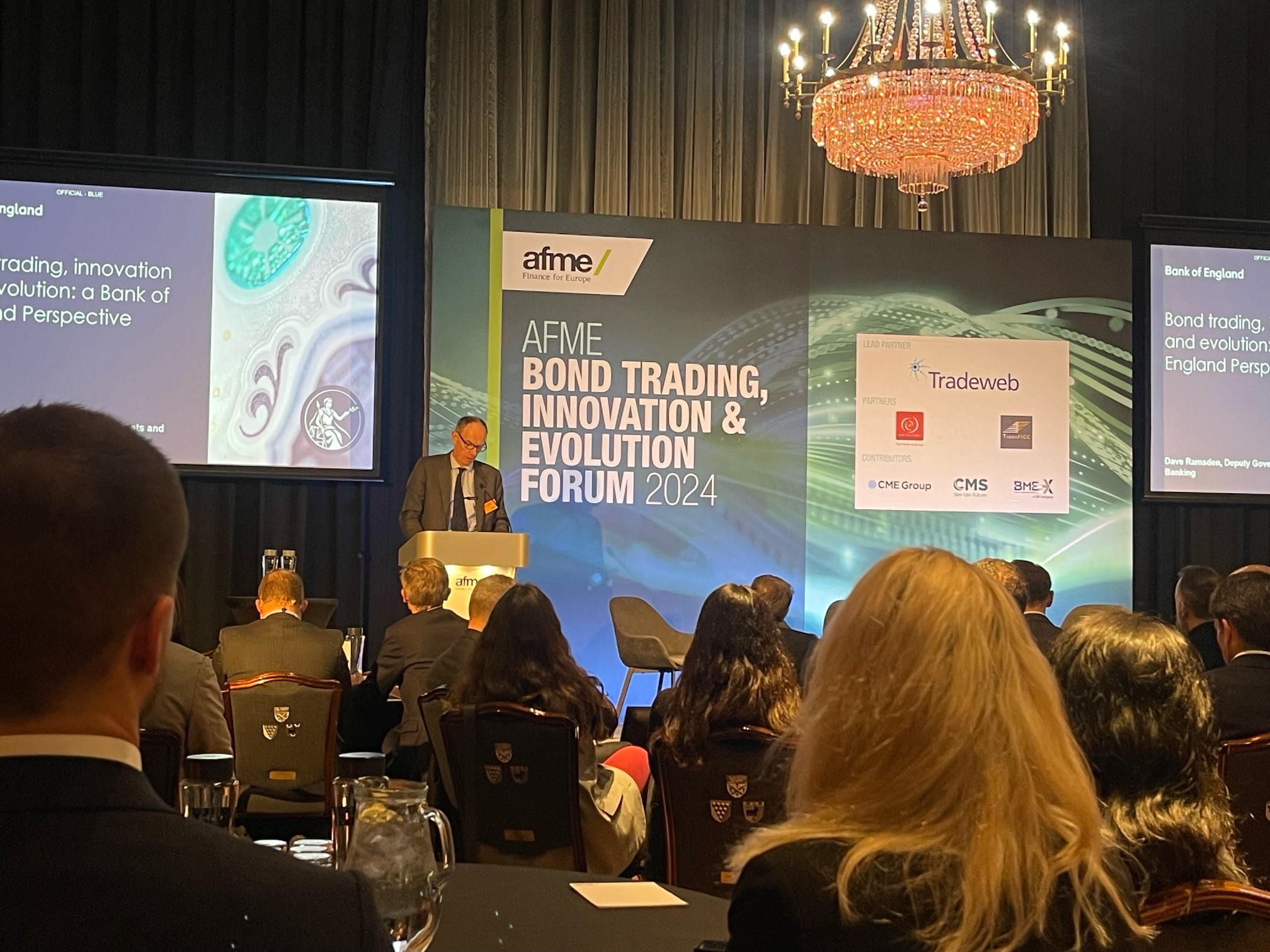In the midst of change – fixed income markets continue to evolve

Digitalisation and regulation are leading to some sweeping changes in global fixed income markets.
BME looks at some of the main themes to emerge from AFME’s (Association for Financial Markets in Europe) Bond Trading, Innovation and Evolution Forum in London.
Bond markets go digital
Nominally considered to be one of the more archaic areas in the financial services industry, bond markets are slowly beginning to digitalise.

“Historically, fixed income securities were traded bilaterally, either OTC or via telephone. Over the last 20 years, we are beginning to see greater electronification of trading, particularly those securities, which are more standardised and liquid,” noted Gonzalo Gómez Retuerto, Head of Fixed Income at BME.
However, the full-scale electronification of bond markets still has a long way to go, especially when benchmarked against some of the progress seen in equities.

“One of the statistics often cited in fixed income circles is that roughly 80% of bond trades are now executed electronically, with the remaining 20% being voice executed. However, on a value basis, roughly 80% of big ticket fixed income trades are carried out by voice, while the rest is conducted electronically. In other words, most of the electronification is happening on smaller ticket bond trades,” according to Tony Shaw, Executive Director, London Office at SIX Swiss Exchange.
While fixed income markets are evolving, this transformation will not happen overnight.
Driving efficiencies in the bond market
In contrast to equities, block trading and algorithmic trading in bond markets are still yet to latch on.
Block trading, whereby large quantities of securities are executed outside of the public market’s purview, has not gained much traction in the fixed income world, mainly because of the complexity and diverse nature of certain bond instruments, according to Shaw.
Although algos are becoming increasingly common in fixed income trading, the data is still not good enough , and nowhere near the standard seen in equity markets.“ For algos to work, you need data,” added Shaw.
Regulatory challenges lie ahead
Updates to existing regulations will also impact fixed income markets, added Gómez Retuerto
Proposals to amend the Markets in Financial Instruments Directive II (MiFID II) are currently in train, with EU regulators pushing for the establishment of EU-wide consolidated tapes (CT) for bonds, together with a prohibition on payment for order flows. If regulators have their way, a CT will be introduced for bonds in 2025, with similar CTs for equities and derivatives to follow in 2026.
“We are closely following regulatory developments in the EU. We fully believe there is a need for sound regulation , which encourages transparency , competitiveness and market resilience,” noted Retuerto.
Fixed income markets are undergoing some major structural changes as new technologies emerge and regulation is updated. If the industry is to thrive going forward, it will need to adapt.
